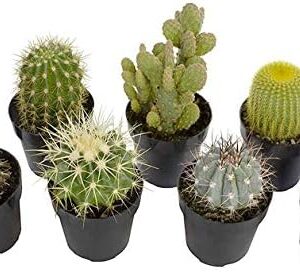We all know how important watering is for our plants. Without the right amount of water, our plants can wither and die, leaving us with an empty and sad garden. But did you know that the timing and frequency of watering can significantly impact the health and growth of your plants?
That’s right! Having a well-planned watering schedule can maximize your plant’s health and ensure they thrive and flourish all year round. So, let’s dive into the world of watering and discover how you can keep your plants happy and healthy with the right watering routine.
First things first, it’s essential to understand the water needs of your plants. Different plants have different water requirements, depending on their species, size, and stage of growth. For example, succulents and cacti prefer dry conditions and only need to be watered sparingly, while leafy greens like lettuce and spinach require more frequent watering to stay hydrated.
To determine the water needs of your plants, consider factors such as the type of plant, the environmental conditions, and the soil type. In general, plants that are in pots and containers will need more frequent watering than those planted in the ground, as they tend to dry out faster.
Once you’ve figured out the water requirements of your plants, it’s time to create a watering schedule. A well-planned watering schedule will help you ensure that your plants receive the right amount of water at the right time, preventing over or under-watering.
One important rule to remember when watering your plants is to water deeply and infrequently. This means giving your plants a good soak, allowing the water to penetrate deep into the soil, rather than watering lightly and frequently. Deep watering encourages the plant’s roots to grow deeper into the soil, making them more resilient to drought conditions and less dependent on frequent watering.
When it comes to the timing of watering, early morning is generally the best time to water your plants. Watering in the morning allows the plant to absorb the water before the heat of the day causes evaporation, reducing the risk of water loss. Avoid watering in the evening, as wet foliage overnight can lead to fungal diseases.
In terms of frequency, the key is to let the soil dry out slightly between watering. Stick your finger into the soil to check for moisture levels – if it feels dry to the touch, it’s time to water. Overwatering can lead to root rot and other problems, so it’s essential to water only when necessary.
It’s also important to water your plants at the base, near the roots, rather than from above. This helps prevent fungal diseases and encourages the roots to grow deeper into the soil, seeking out moisture and nutrients.
Another tip to maximize your plant’s health is to use a watering can with a narrow spout or a drip irrigation system. This allows you to water directly at the base of the plant, ensuring that the water reaches the roots where it’s needed most. Avoid using a sprinkler or hose, as this can lead to wastage and water loss through evaporation.
When it comes to watering indoor plants, it’s important to choose the right type of potting mix. A well-draining mix is essential to prevent waterlogged roots and ensure good aeration for the plant. Check the moisture level of the soil regularly and adjust your watering schedule accordingly.
In addition to regular watering, it’s also important to mulch around your plants. Mulching helps retain moisture in the soil, reduces evaporation, and suppresses weeds. Organic mulches such as compost, straw, or bark chips can also add nutrients to the soil as they break down, benefiting the overall health of your plants.
Finally, remember that every plant is different, and it may take some trial and error to find the perfect watering schedule for your garden. Pay attention to the signs your plants give you – wilting, yellowing leaves, or stunted growth can be indicators of over or under-watering. Adjust your watering routine accordingly to keep your plants happy and healthy.
In conclusion, a well-planned watering schedule is essential for maximizing your plant’s health and ensuring they thrive and flourish. By understanding the water needs of your plants, creating a watering schedule, and following some basic watering tips, you can keep your plants happy and healthy all year round. So, grab your watering can, get out into the garden, and give your plants the love and care they deserve.






